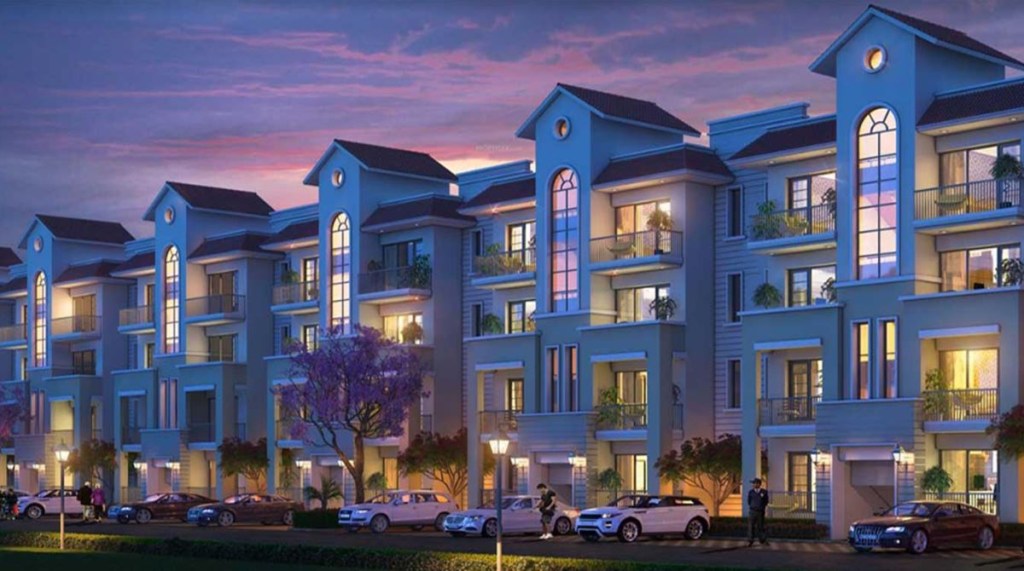– By Piyush Agarwal
India is witnessing an unprecedented surge in the demand for luxury housing, reshaping skylines and redefining opulence. The luxury real estate market in India is experiencing an incredible run of growth and allure, with properties ranging from expansive penthouses with panoramic views to palatial estates adorned with the finest craftsmanship. The recently released data from real estate consultancy firm Anarock reveals that the average price of luxury housing units in India valued at over Rs 1.5 crore, has surged by an impressive 24% this year compared to 2018.
This article examines the dynamic market for luxury housing in India, factoring reasons for the segment’s growth.
Change in Consumer Behaviour
The dynamic landscape of consumer behaviour in India has experienced a significant transformation in recent years, with various industries witnessing a remarkable resurgence after the challenging period of lockdowns. One sector that has particularly thrived amidst this economic evolution is real estate, as investments in the housing market has grown exponentially. According to the ‘India Industry Monitor Q1 2023’ report by CBRE, the luxury housing segment in the country has displayed remarkable growth over the last two years. Notably, sale of luxury homes during the first quarter of 2023 witnessed an astounding annual increase of approximately 151 percent. However, this surge in demand for residential properties has also brought about a noteworthy shift in consumer behaviour, especially in urban hubs such as Bengaluru and Hyderabad, where factors like design and sustainability have assumed greater significance in home-buying decisions.
Recognizing the rising demand for residential real estate, developers have begun to harness the power of enhanced curb appeal and architectural design in their properties. By prioritizing design elements that align with consumer preferences, developers are catering to the evolving needs of homebuyers, resulting in a more holistic and satisfying living experience. The growth within the luxury segment reflects a broader trend in the Indian real estate market.
According to data from Anarock, luxury homes in the top 7 cities have demonstrated an impressive average price appreciation of 24% over the past five years. In contrast, affordable homes have seen a more modest 15% price increase during the same period.
Key Factor
The rise of the middle class in India has emerged as a prominent catalyst in driving the demand for luxury properties. As this segment continues to expand, individuals are actively seeking homes that suit their newfound affluence and elevated social lifestyle. The growing preference for luxury housing can also be linked to the rising disposable income among many Indians. With increased salaries, individuals now have more substantial financial resources to invest in upscale goods, particularly real estate properties.
As individuals aspire to live a life of luxury and convenience to embrace a more opulent lifestyle, the demand for luxury residences has experienced a remarkable upswing. Bengaluru and the Mumbai Metropolitan Region (MMR) have both seen substantial uptick in average prices within the budget segment, with each recording a significant 27% increase. In Bengaluru, luxury home prices have shown a noteworthy ascent, rising from Rs 10,210/sq.ft in 2018 to the current rate of Rs 12,970/sq.ft. Similarly, in MMR, the average price has surged from Rs 23,119/sq ft in 2018 to a present level of Rs 29,260/sq.ft.
Adaptive Changes
The rise in luxury living in India has resulted in a series of adaptive changes that reflect the changing aspirations and preferences of the wealthy. One notable adaptation in luxury homes is the integration of smart technology. Home automation systems now enable residents to control lighting, temperature, security, and entertainment systems via their smartphones or voice commands, greatly improving convenience and comfort.
Furthermore, sustainable living has become a major focus, with luxury properties incorporating eco-friendly features such as solar panels, rainwater harvesting systems, and energy-efficient appliances to align with residents’ growing environmental consciousness. Luxury has also evolved to include experiential living, with developers including amenities such as rooftop gardens, infinity pools, private theatres, wellness centres, and concierge services.
Conclusion
In conclusion, the surge in luxury real estate driven by millennial aspirations signifies a substantial transformation in the real estate sector. This shift has spurred leading developers to revolutionize the Indian residential real estate industry through innovative architectural and design practices that resonate with both current and future generations. As the industry continues to evolve, those who anticipate and meet the needs of this discerning market segment are poised for thriving success in the years ahead.
(Piyush Agarwal is the Head Business Development – Hyderabad at Sattva Group.)
(Disclaimer: Views expressed are personal and do not reflect the official position or policy of Financial Express Online. Reproducing this content without permission is prohibited.)

